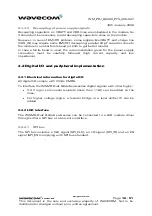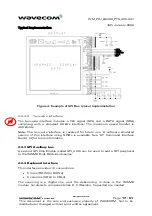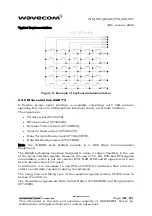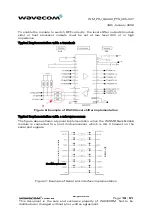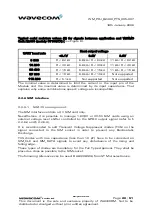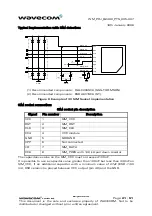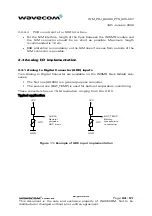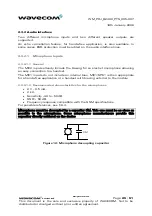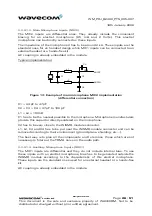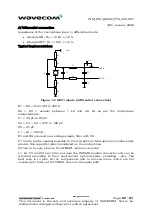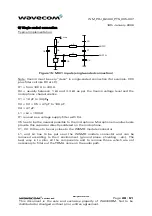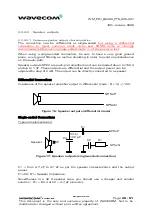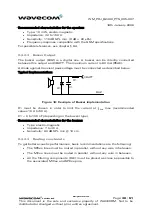
WM_PRJ_Q2400_PTS_005 -007
18th January 2006
Confidential©
All rights reserved
Page:
29
/
51
This document is the sole and exclusive property of WAVECOM. Not to be
distributed or divulged without prior written agreement.
2.3.2.2 Speaker
outputs
2.3.2.2.1 Common speaker output characteristics
The connection can be differential or single-ended
but using a differential
connection to reject common mode noise and TDMA noise is strongly
recommended. Moreover in single-ended mode, ½ of the power is lost
.
When using a single-ended connection, be sure to have a very good ground
plane, a very good filtering as well as shielding in order to avoid any disturbance
on the audio path.
Speaker outputs SPK2 are push-pull amplifiers and can be loaded down to 150
Ω
and up to 1 nF
. These outputs are differential and the output power can be
adjusted by step of 2 dB. The output can be directly connected to a speaker.
Differential Connection:
Impedance of the speaker amplifier output in differential mode : R
≤
1
Ω
+/-10 %
SPKxP
SPKxN
Figure 16: Speaker outputs (differential mode)
Single-ended Connection:
Typical implementation:
SPKxP
C1
+
SPKxN
C2
+
ZHP
Speaker
C3
33 to
100 pF
R1
Figure 17: Speaker outputs (single-ended connection)
C1 = from 4.7 µF to 47 µF as per the speaker characteristics and the output
power.
C1=C2; R1= Speaker Impedance.
Nevertheless in a 32
Ω
speaker case, you should use a cheaper and smaller
solution : R1 = 82
Ω
et C2 = 4.7 µF (ceramic).


